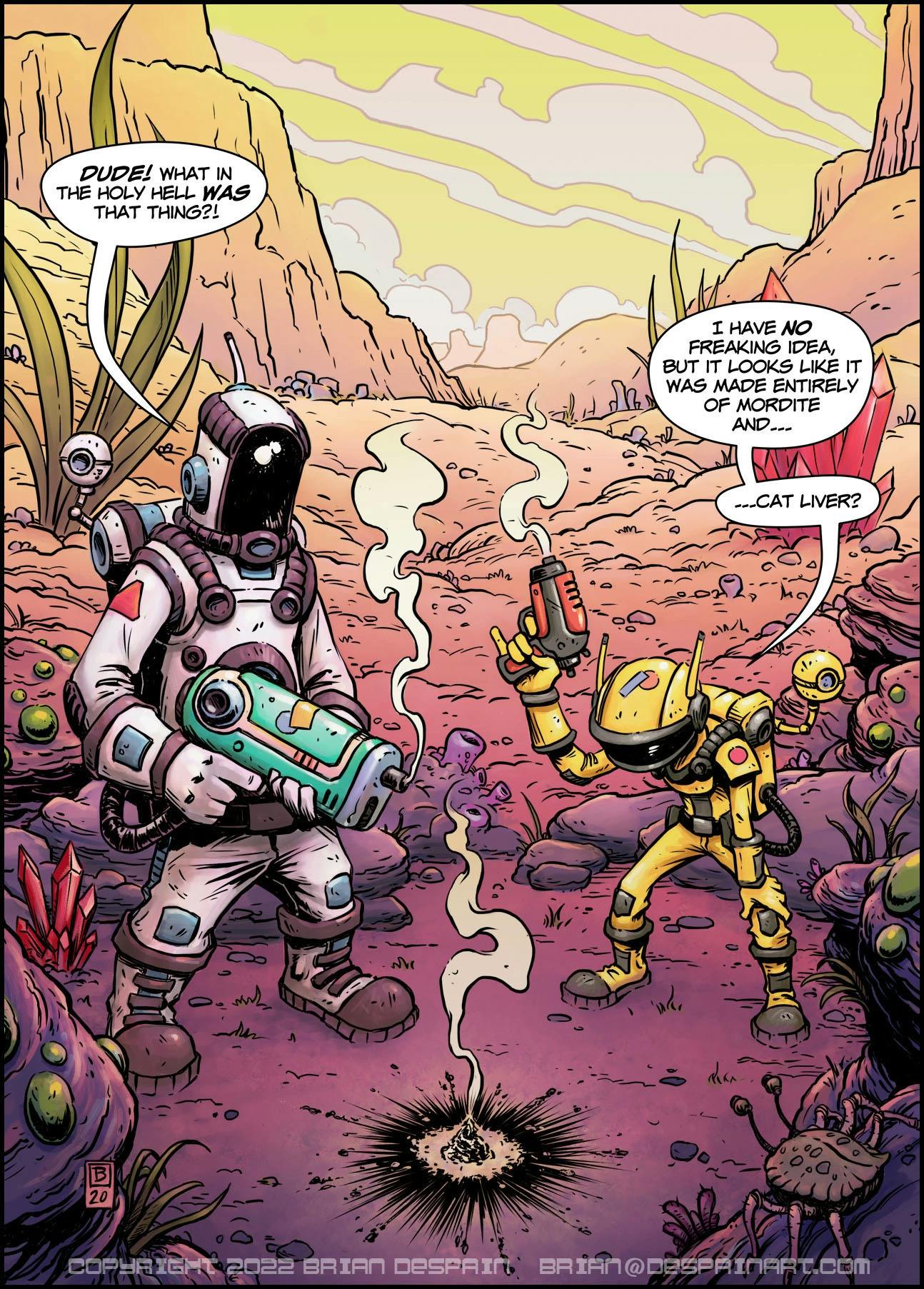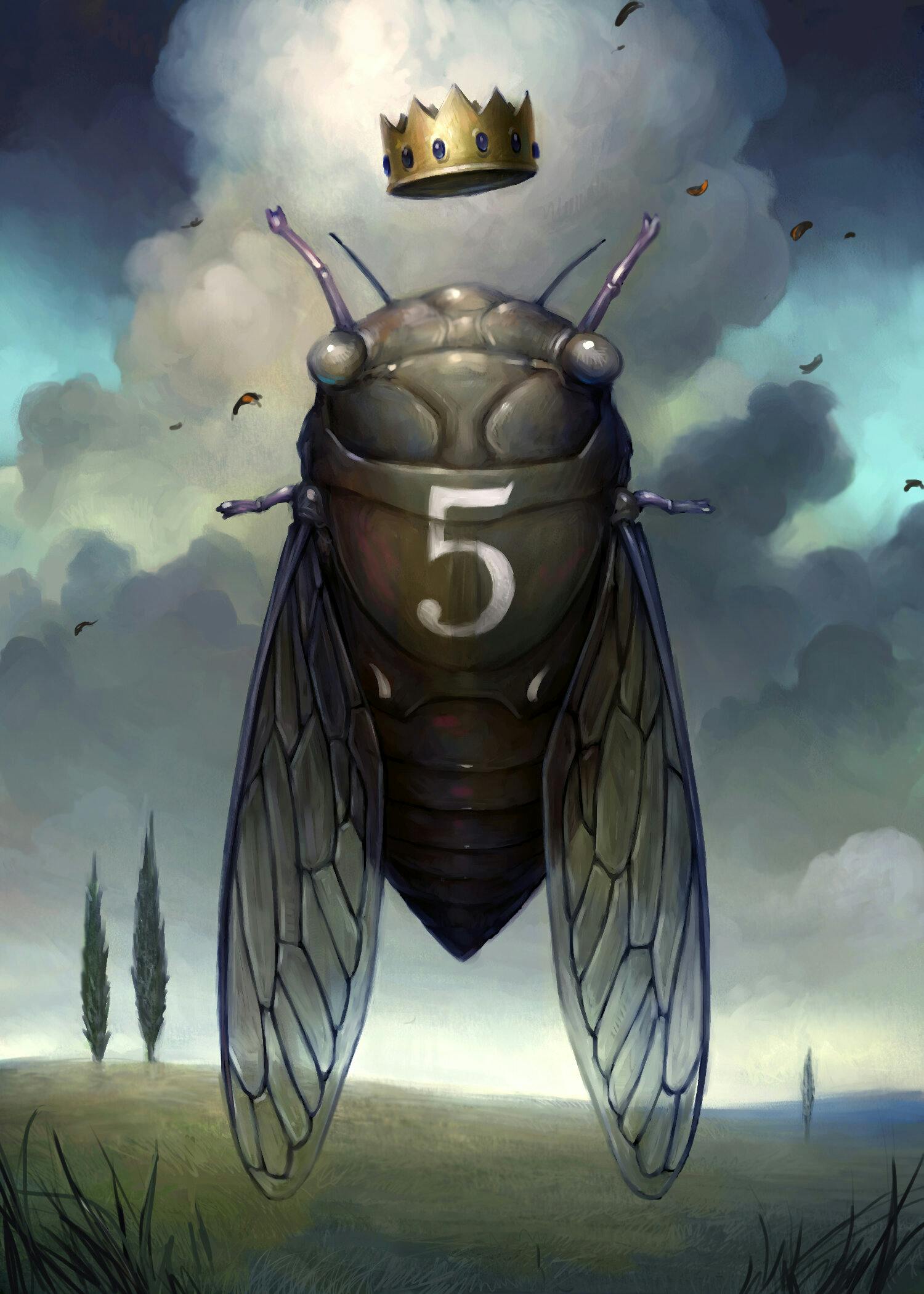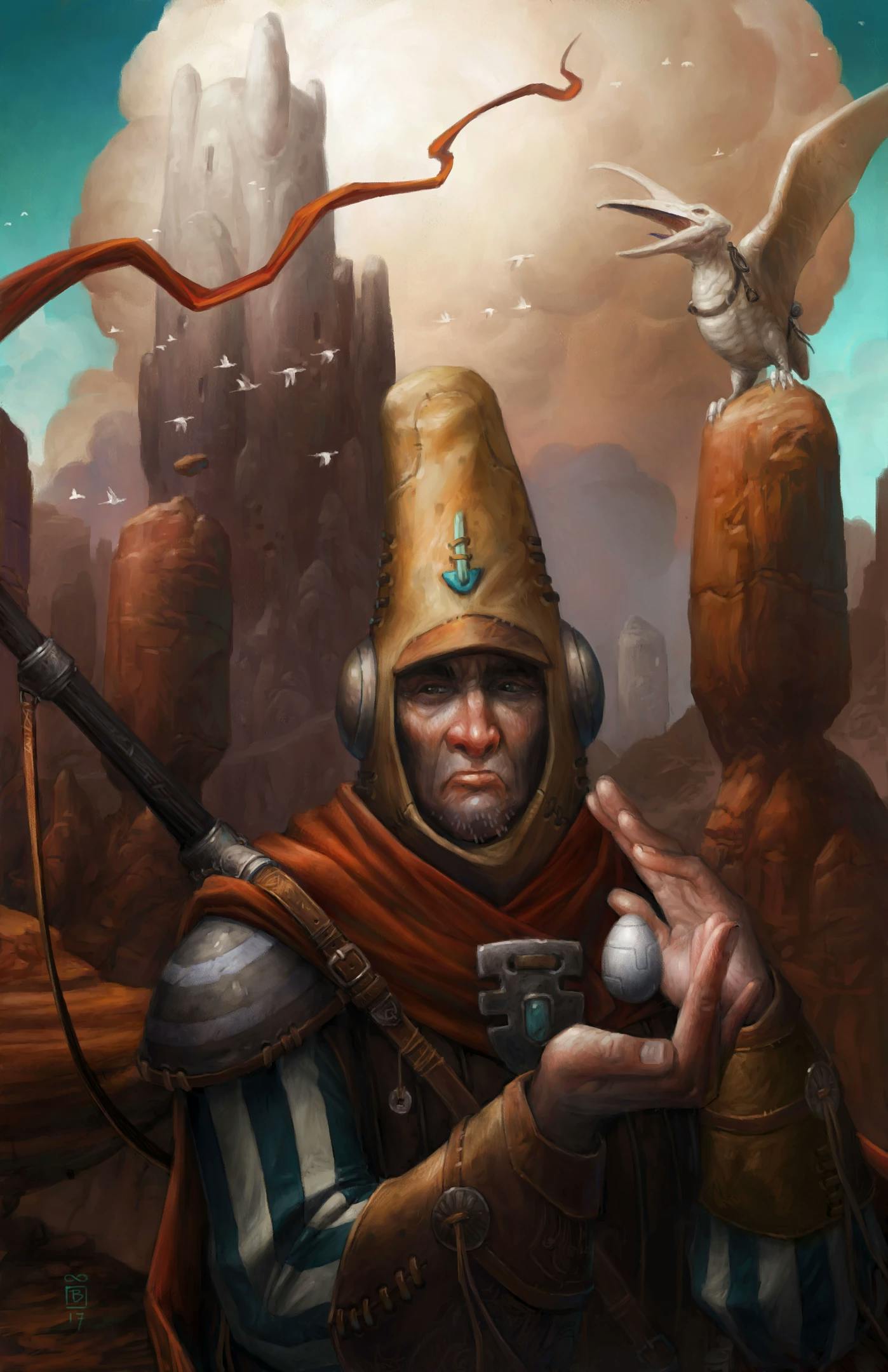
Scott Douwes
Graphic Designer
3D
Animator


Going through the Grind

Brian Despain: Like many artists, I’ve always had a ken for creating. I remember my father used to bring home reams of discarded computer paper, the old accordion kind with the pinhole feed on the side, and I would spend countless hours drawing complex scenes of moon bases or haunted houses. In grade school and high school, I’d always set my targets on art-related jobs.

When I grew up, from architect to cartoonist, whatever it was that I wanted to be at the moment involved art. It wasn’t until college (pursuing an art degree, of course) that I finally realized what I really wanted to do was to be a professional illustrator.
So I changed my concentration, graduated from college, and headed out to put my mark on the world. I immediately got my first art job – as a clerk in an art store. Turns out, making a living as a working artist was a little harder than I’d imagined. However, it was while working there that my first REAL professional gig fell into my lap.

The owner of a small company that made cartoon maps of various towns and their businesses came in looking for someone to illustrate said maps. I jumped at the chance and that was the beginning of my thirty-year streak.
The map work was fun but didn’t pay very well. I kept working at the art store and did the maps and other freelance gigs on the side, mostly low paying-high volume jobs for small press companies producing and publishing role-playing game books until I finally was able to land a job doing graphic design and illustration for a hole-in-the-wall printing company.

It was here that I fell into digital painting, (looking for something to do between my assigned tasks) doing experiments with Photoshop until I’d developed a technique I could employ to create colorwork for my freelance career. I left the small printing company for another larger graphic design/ illustration house where I learned the finer points of color correction, and photo retouching as well as continuing with my illustration and digital painting. Stayed there a while until, as these things sometimes happen, the company ended in Chapter 11 and I was out of a job.

I tried for a good few months to find a similar gig in the area with no luck but, once again, fate stepped in and showed me the way. All the illustrations I’d done for the RPG publishers had garnered the attention of a video game developer out of Boston and, an interview and a job offer later, I was making games. Stayed in the games arena, jumping around to various companies for nearly a decade, adding 3D modeling and texturing, high poly modeling, and animation to my skill set while also continuing with illustration, doing both conceptual illustrations for games as well as finished illustration on the side for various clients.
Also picked up oil painting as a side project, eventually turning that into a small spate of gallery shows and private commissions. I think I would still be at games, had I not met my wife and dropped it all to follow her on a journey around the world. She had taken a naval scholarship to pay for medical school, so owed some time in the military. I quit my career; sold my house and attached my wagon to that star. I would occasionally pick up illustration gigs and even tried to continue with the gallery scene but more and more of my time was taken up with our kids and running the household.

And that’s where I am today. We’ve since left military life and settled down but my main job is raising the kids and taking care of the house. I still do a fair bit of freelance illustration but not like I used to in my heyday. These days I like to spend my spare art time doing all the things I dreamed about doing over the years. I’m learning how to write and illustrate comics(a project that I found was a lot more complicated than first blush)and even trying my hand at sculpting and casting bronze. We’ll see what the future holds.
Brian Despain: First and foremost, one has to be a consummate professional. If you agree to do a job, then do that job to the best of your ability. Be polite, punctual, and open about your abilities and schedule.

Second, be fluid. Designs change; ideas change; schedules change. You are a gun for hire, so if the client wants changes to your art or your time, you do your best to accommodate.
Last, be firm. Things change but by no means should that burden be yours alone. If you allow a client to walk all over you, it compromises your ability to deliver the best possible product and that isn’t any good for anyone. By being up-front and firm in your needs and abilities and not simply agreeing to all that a client says, not only will your sanity stay intact but often the client will respect you more.

Brian Despain: I honestly don’t know how to answer this. Most of my best work is that which I made for myself, for no other reason than to create. I don’t think I have a “favorite” freelance work. And if I do, the art was for the clients that gave me the most lateral movement to just do what I do.

Brian Despain: A long time ago, I became enamored with clouds. I used them a lot in my fine artwork and became quite adept at rendering them. The AD from Scientific America had seen my work and when an article came around all about the science of mapping clouds, they felt I was the best person to call.
I got rough sketches of what they wanted and from that, I created rendered illustrations of, well, clouds and then overlaid graphics to show how and wherein the cloud towers different kinds of electrochemical processes occurred. It was fun.

Brian Despain: Both have their pros and cons. Doing concepts for games has got some interesting problem-solving. For instance, you need to understand that eventually your designs have to be created in a game and so you have to keep the limitation of the game engine and the limitation of 3D modeling and animation in your head while you come up with stuff.
However, the downside is that it’s not just the cool monsters and characters that need a concept. You will often find yourself drawing endless axe heads or designing different levels of the same potion or even stuff as mundane as a signpost or a rain barrel. It can get tedious and sometimes downright difficult. I mean, how many different AND interesting axe heads can one person make?

Traditional painting is also enjoyable. I mean, you get to create YOUR vision and bring it into the world, which is amazing no matter how you slice it. However, the process itself is quite labor-intensive; you don’t have the “out” an undo button gives you and, if you end up selling your work through a gallery, it’s pretty cut-throat.
A gallery typically takes a 50% commission on any work sold, meaning if you want to make any sort of living as a gallery artist, you have to do twice the work you think you have to – and that’s even if you end up selling EVERYTHING which is often not the case.
“If you agree to do a job, then do that job to the best of your ability”
Brian Despain: For most of my life, it was more the comic strips that caught my eye. Bloom County, Fox Trot, Calvin, and Hobbes, were my benchmark targets. I loved the serial stories told in four-panel snippets, each a complete unit unto itself. It wasn’t until much later that I started to get interested in comics properly.
I never really thought about doing anything with comics, other than reading them for a very long time, though I did befriend and do some work with various comic writers and artists. It was always either concept work or single-panel “guest” illustrations as that was my comfort zone.

It wasn’t until I had some time on my hands that I decided to finally take the plunge to go whole cloth into writing, illustrating, and coloring my own story. I’d had some ideas throughout the years that “would make a good comic” but that was about as far as they ever went.
Now I’m in the thick of it learning panel layout, writing dialogue, understanding camera work, character interaction, simple fill color, and so on. All of it is a complex web of interconnected cogs that come together to create a seamless whole with me in the middle holding all the strings and, frankly, a little lost at times.
However, it’s been as much fun as it’s been challenging and I’ll continue with it, time willing. Ultimately, I’d love to have a finished product to share with the world. It won’t ever be as perfect as I want it to be but, hopefully, it’ll be good enough to tickle the fancy of a few people and that would make it all worthwhile.
Brian Despain: My involvement with Warner Brothers was, in truth, with one of their subsidiaries doing exactly what I was doing while in the games industry – concept work for a video game. It was later in my career and, instead of doing it working as a kept artist at a game studio, I simply did it as a hired contractor. Other than that it was exactly the same.

Brian Despain: Learn how to say “no”. You don’t have to take all the jobs. It may seem like if you don’t take a job, there’ll never be another after it and how will you ever pay your bills? However, being able to pick and choose the right jobs for you will not only let you excel at them, bringing more work and attention but will also help stave off the “Burn out” that can happen to even the best of us. If the work doesn’t interest you or is too outside of your comfort zone, then turn it down and move on.








